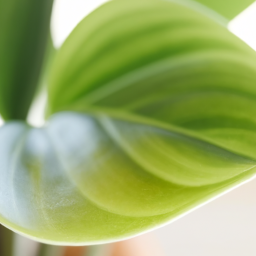
Are you looking to spruce up your office space and create a more inviting and productive environment? Look no further than the world of office plants! Adding some greenery to your workspace not only enhances the aesthetics but also brings a myriad of benefits. Whether you have a green thumb or struggle to keep plants alive, there are plenty of options to choose from. In this blog post, we will explore the best office plants that are easy to care for, improve air quality, and boost your mood and productivity. So, let’s dive in and discover the perfect plants to transform your office into a thriving oasis!
Benefits of Having Office Plants: Enhancing Productivity and Well-being
Introduction
Welcome to the world of office plants, where nature meets productivity and well-being. In today’s fast-paced corporate environment, creating a pleasant and healthy workspace is crucial for both employees and employers. Incorporating office plants into your workplace not only adds aesthetic appeal but also offers numerous benefits that enhance productivity and well-being. Let’s dive into the fascinating world of office plants and explore how they can transform your office environment.
Improved Air Quality
One of the most significant benefits of having office plants is their ability to improve air quality. Indoor spaces often suffer from poor air circulation, resulting in a buildup of pollutants and toxins. Office plants act as natural air purifiers by absorbing harmful gases and releasing oxygen. They also help to reduce the levels of airborne dust and pollutants, creating a healthier and more refreshing environment for everyone.
Furthermore, certain office plants, such as the peace lily and snake plant, have been proven to remove common indoor air pollutants like formaldehyde, benzene, and trichloroethylene. This purification process not only improves air quality but also reduces the risk of respiratory issues, allergies, and other health problems among employees.
By introducing office plants, you can create a cleaner and healthier workspace, which ultimately leads to increased productivity and well-being among your employees.
Natural Stress Relievers
In today’s fast-paced work culture, stress has become a common companion for many employees. However, office plants can act as natural stress relievers, helping to create a more relaxed and peaceful working environment.
Research has shown that simply being in the presence of plants can reduce stress levels and promote a sense of calmness. The green color of plants has a soothing effect on our minds, helping to alleviate anxiety and tension. Additionally, the act of caring for office plants can serve as a therapeutic activity, allowing employees to take a break from their work and engage in a calming and nurturing task.
By incorporating office plants into your workspace, you can create a more tranquil and stress-free environment, leading to improved focus, creativity, and overall well-being among your employees.
Increased Productivity and Focus
When it comes to productivity, office plants can work wonders. Numerous studies have shown that having greenery in the workplace can significantly enhance productivity levels and employee focus.
One of the reasons behind this is the concept of biophilia, which suggests that humans have an innate connection with nature. By bringing elements of nature, such as office plants, into the workplace, employees feel more connected and engaged, leading to improved concentration and productivity.
Moreover, office plants have been found to reduce fatigue and increase attentiveness. The presence of plants in the office environment helps to create a visually stimulating and refreshing atmosphere, preventing employees from feeling overwhelmed or mentally drained.
By strategically placing office plants throughout your workspace, you can create an environment that fosters productivity, creativity, and focus, ultimately benefiting both your employees and your business.
Conclusion
In conclusion, office plants offer a multitude of benefits that can enhance productivity and well-being in the workplace. From improving air quality to acting as natural stress relievers and increasing productivity levels, these green companions have the power to transform your office environment.
By incorporating office plants into your workspace, you not only create a visually appealing and refreshing atmosphere but also promote a healthier and more productive work environment. So why wait? Start exploring the world of office plants and unlock the potential of nature in your office today!

Top 5 Low-Maintenance Office Plants for Busy Professionals
As a busy professional, you may find it challenging to take care of plants in your office. However, having greenery around can greatly enhance your workspace, reduce stress, and improve air quality. The good news is that there are several low-maintenance office plants that require minimal attention and can thrive even in the busiest of environments. In this article, we will explore the top 5 low-maintenance office plants that are perfect for busy professionals like you.
1. Snake Plant
The Snake Plant, also known as Sansevieria or Mother-in-Law’s Tongue, is an excellent choice for office spaces. This plant is incredibly resilient and can tolerate low light conditions, making it ideal for offices with limited natural light. It also has the ability to purify the air by removing toxins such as formaldehyde and benzene. The Snake Plant requires minimal watering and can survive for weeks without attention.
To care for your Snake Plant, place it in a well-draining potting mix and water it sparingly. Allow the soil to dry out completely between waterings, as overwatering can lead to root rot. This plant prefers indirect light but can tolerate low light conditions as well. With its striking upright leaves and low maintenance requirements, the Snake Plant is a perfect addition to any office space.
2. ZZ Plant
The ZZ Plant, scientifically known as Zamioculcas zamiifolia, is another low-maintenance office plant that is perfect for busy professionals. It has glossy, dark green leaves that can add a touch of elegance to your workspace. The ZZ Plant is highly adaptable and can thrive in various light conditions, including low light. It is also drought-tolerant and can withstand periods of neglect.
To care for your ZZ Plant, place it in a well-draining pot and water it only when the top inch of soil feels dry. Overwatering can cause the roots to rot, so it’s essential to avoid excessive watering. The ZZ Plant can tolerate low light but prefers bright, indirect light for optimal growth. With its ability to survive in challenging conditions and its attractive foliage, the ZZ Plant is an excellent choice for any office setting.
3. Pothos
Pothos, also known as Devil’s Ivy, is a popular choice for office environments due to its low maintenance requirements and beautiful trailing vines. It can thrive in a wide range of light conditions, including low light, and is known for its air-purifying qualities. Pothos plants are also known to be excellent at removing toxins like formaldehyde and xylene from the air.
To care for your Pothos plant, place it in a well-draining potting mix and water it when the top inch of soil feels dry. Pothos plants are forgiving and can withstand occasional underwatering, making them perfect for busy professionals. They can tolerate low light but prefer bright, indirect light to maintain their vibrant foliage. With their trailing vines and air-purifying properties, Pothos plants are a great addition to any office space.
4. Spider Plant
The Spider Plant, scientifically known as Chlorophytum comosum, is a classic choice for office settings. It is known for its arching leaves with white stripes, which can add a touch of visual interest to your workspace. Spider Plants are highly adaptable and can thrive in various light conditions, including low light. They are also excellent at purifying the air by removing toxins like formaldehyde and carbon monoxide.
To care for your Spider Plant, place it in a well-draining potting mix and water it when the top inch of soil feels dry. Spider Plants prefer bright, indirect light but can tolerate low light conditions as well. They are relatively forgiving and can withstand occasional neglect. With their unique foliage and air-purifying qualities, Spider Plants are a fantastic choice for any office environment.
5. Peace Lily
The Peace Lily, scientifically known as Spathiphyllum, is a beautiful flowering plant that can thrive in office spaces with low light conditions. It has dark green leaves and elegant white flowers that can brighten up any workspace. Peace Lilies are known for their ability to purify the air by removing toxins like formaldehyde, benzene, and trichloroethylene.
To care for your Peace Lily, place it in a well-draining potting mix and water it when the top inch of soil feels dry. Peace Lilies prefer low light conditions but can tolerate bright, indirect light as well. They are relatively low-maintenance plants but may require more frequent watering compared to other plants on this list. With their beautiful flowers and air-purifying qualities, Peace Lilies are a stunning addition to any office.
Now that you are familiar with the top 5 low-maintenance office plants, you can choose the one that suits your preferences and office environment the best. Remember to place them in appropriate pots with well-draining soil, and water them sparingly to avoid overwatering. These plants will not only enhance the aesthetic appeal of your workspace but also contribute to a healthier and more productive work environment.

Choosing the Right Office Plants: Factors to Consider for a Healthy Work Environment
Welcome to our guide on choosing the best office plants for a healthy work environment. Whether you are a plant enthusiast or a beginner, incorporating greenery into your office space can have numerous benefits. Not only do office plants enhance the aesthetic appeal, but they also improve air quality, reduce stress levels, and boost productivity. In this article, we will explore the factors to consider when selecting the perfect office plants to create a vibrant and healthy workspace.
1. Light Requirements
When choosing office plants, it’s crucial to consider their light requirements. Different plants have varying light preferences, and understanding these needs will help you determine the best placement within your office. Assess the available natural light in your workspace and choose plants accordingly.
If your office has ample sunlight throughout the day, you can opt for plants that thrive in bright, direct light. Examples include succulents, cacti, and certain types of palms. On the other hand, if your office has limited natural light, you can choose plants that can tolerate low-light conditions, such as pothos, snake plants, or peace lilies.
It’s essential to strike a balance and avoid placing light-sensitive plants in direct sunlight or low-light plants in excessively bright areas. Observing the light levels in your office and selecting plants accordingly will ensure their healthy growth.
2. Maintenance Requirements
Consider the maintenance requirements of office plants before making your selection. While some plants require minimal care, others may need more attention. Assess the availability of time and resources in your office for plant maintenance.
If you have a busy office environment with limited time for plant care, choose low-maintenance plants that can thrive with minimal attention. Examples include ZZ plants, rubber plants, or spider plants. These plants are resilient and can tolerate occasional neglect.
However, if you have plant enthusiasts or a dedicated team responsible for plant care, you can opt for more demanding plants that require regular watering, pruning, or fertilizing. Orchids, bonsai trees, or ferns are great choices for those willing to invest time and effort into plant maintenance.
3. Air Purification Abilities
One of the significant benefits of having office plants is their ability to purify the air and improve indoor air quality. When selecting office plants, consider their air-purifying properties to promote a healthier work environment.
Plants like peace lilies, spider plants, or snake plants are known for their excellent air purification abilities. They can remove harmful toxins from the air, such as formaldehyde, benzene, or xylene, which are commonly found in office environments.
Additionally, plants with dense foliage and larger leaves tend to have higher air-purifying capabilities. Consider incorporating plants like Boston ferns, English ivy, or areca palms to maximize the air purification benefits in your office.
By considering these factors, you can select the best office plants for a healthy work environment. Remember to assess the light requirements, maintenance needs, and air purification abilities of each plant before making your final choices. Incorporating greenery into your office space will not only create a visually appealing atmosphere but also promote well-being and productivity among the employees. So, go ahead and transform your workplace into a thriving oasis with the right office plants!

Best Office Plants for Air Purification and Indoor Pollution Control
Creating a healthy and pleasant work environment is essential for productivity and employee well-being. One effective way to improve the air quality in your office space is by incorporating office plants. Not only do they add a touch of nature to your workspace, but they also help purify the air by removing harmful toxins and pollutants. In this article, we will explore the best office plants for air purification and indoor pollution control.
1. Snake Plant (Sansevieria trifasciata)
The Snake Plant, also known as Mother-in-Law’s Tongue, is a popular choice for office settings due to its low maintenance requirements and air-purifying abilities. This plant is known for its ability to convert carbon dioxide into oxygen at night, making it an excellent choice for improving indoor air quality.
Furthermore, the Snake Plant is effective in filtering out common indoor pollutants such as benzene, formaldehyde, trichloroethylene, and xylene. Its long, upright leaves with yellow edges add a touch of elegance to any office space.
To care for a Snake Plant, place it in a well-lit area, but it can also tolerate low light conditions. Water the plant sparingly, allowing the soil to dry out between waterings, as overwatering can lead to root rot.
2. Peace Lily (Spathiphyllum)
The Peace Lily is not only a visually appealing plant but also an excellent choice for improving air quality in your office. It effectively removes common indoor pollutants like formaldehyde, benzene, and trichloroethylene. Additionally, the Peace Lily can increase humidity levels, which can be beneficial in dry office environments.
This plant thrives in low to medium light conditions, making it suitable for offices with limited natural light. Keep the soil slightly moist and avoid overwatering, as this can lead to root rot. The Peace Lily also produces beautiful white flowers, adding a touch of elegance to your workspace.
3. Spider Plant (Chlorophytum comosum)
The Spider Plant is known for its ability to remove formaldehyde, xylene, and toluene from the air, making it an excellent choice for indoor pollution control. Its long, arching leaves with white stripes make it a visually appealing addition to any office space.
This plant is relatively easy to care for and thrives in bright, indirect light. It prefers well-draining soil, so make sure not to overwater it. Spider Plants also produce small offshoots called “spiderettes,” which can be propagated and shared with colleagues to enhance the greenery in your office.
4. Aloe Vera (Aloe barbadensis)
Aloe Vera is not only known for its medicinal properties but also for its air-purifying abilities. It effectively removes formaldehyde from the air, which is commonly found in office furniture and cleaning products. Aloe Vera plants are also easy to care for and can thrive in both bright and low light conditions.
To care for an Aloe Vera plant, place it in a well-draining potting mix and allow the soil to dry out between waterings. Aloe Vera plants also appreciate some direct sunlight, so consider placing them near a window in your office.
By incorporating these best office plants for air purification and indoor pollution control, you can create a healthier and more pleasant work environment. Remember to consider the lighting conditions and maintenance requirements of each plant to ensure their longevity. Enjoy the benefits of cleaner air and a greener workspace!

Stylish and Aesthetic Office Plants: Elevating the Workplace Ambiance
Welcome to the wonderful world of office plants! Incorporating stylish and aesthetic plants into your workplace not only adds a touch of greenery but also elevates the overall ambiance. Plants have been proven to enhance productivity, reduce stress, and improve air quality, making them an essential element in any office setting. In this comprehensive guide, we will explore the top office plants that are not only visually appealing but also easy to care for. So, let’s dive in and transform your workspace into a vibrant oasis!
The Power of Greenery
Before we delve into the specific plants, let’s understand why adding greenery to your office is so important. Studies have consistently shown that plants have a positive impact on employees’ well-being and productivity. The presence of plants in the office can reduce stress levels, improve focus, and boost creativity. Additionally, plants act as natural air purifiers, filtering out harmful toxins and increasing oxygen levels, leading to a healthier working environment.
Now that we understand the benefits, let’s explore some of the best office plants that will not only enhance the aesthetics but also create a more pleasant and productive workspace.
1. Snake Plant (Sansevieria Trifasciata)
The Snake Plant, also known as Mother-in-Law’s Tongue, is a popular choice for office spaces due to its low maintenance and striking appearance. With its tall, upright leaves that resemble snakeskin, this plant adds a touch of elegance to any setting. Snake Plants are known for their ability to purify the air by removing toxins such as formaldehyde and benzene. They thrive in low light conditions and require minimal watering, making them perfect for busy office environments.
When caring for a Snake Plant, ensure that it is placed in well-draining soil and water only when the top inch of soil feels dry. Avoid overwatering, as this can lead to root rot. With proper care, your Snake Plant will thrive and become a focal point in your office.
2. Pothos (Epipremnum Aureum)
If you’re looking for a versatile and easy-to-grow plant, the Pothos is an excellent choice. With its cascading vines and heart-shaped leaves, the Pothos adds a touch of elegance and charm to any office space. This plant is known for its ability to purify the air by removing pollutants like formaldehyde, benzene, and xylene. It can thrive in a variety of lighting conditions, from low light to bright indirect light, making it suitable for different office environments.
To care for a Pothos, place it in well-draining soil and water when the top inch of soil feels dry. This plant is forgiving when it comes to watering, so occasional neglect won’t harm it. Regular pruning will help maintain its bushy appearance and prevent the vines from becoming too long. With its lush foliage and easy care requirements, the Pothos is a perfect addition to any office.
3. Peace Lily (Spathiphyllum Wallisii)
The Peace Lily is not only a visually stunning plant but also an excellent air purifier. With its glossy, dark green leaves and elegant white flowers, this plant adds a touch of sophistication to any office setting. The Peace Lily is known for its ability to remove toxins like formaldehyde, benzene, and trichloroethylene from the air. It thrives in low to medium light conditions and requires regular watering to keep the soil moist.
To care for a Peace Lily, place it in well-draining soil and water when the top inch of soil feels dry. Avoid overwatering or allowing the plant to sit in water for extended periods, as this can lead to root rot. Regular misting will help maintain the humidity levels that the Peace Lily prefers. With its beautiful blooms and air-purifying qualities, the Peace Lily is a must-have for any office.
Conclusion
Incorporating stylish and aesthetic office plants not only enhances the visual appeal of your workspace but also creates a more inviting and productive environment. The Snake Plant, Pothos, and Peace Lily are just a few examples of office plants that are easy to care for and offer numerous benefits. Remember to choose plants that thrive in the lighting conditions of your office and consider their maintenance requirements. With a little love and attention, your office plants will thrive and contribute to a healthier and more vibrant workplace. So, go ahead and bring nature indoors!
Let’s wrap up what we learned
Are you tired of staring at blank walls and boring cubicles all day long? Well, it’s time to bring some life into your office space! Adding plants to your workspace not only adds a touch of nature but also provides numerous benefits for your well-being and productivity. In this blog post, we will explore the best office plants that are easy to care for and will thrive in any environment.
First on our list is the ever-popular Snake Plant. This tough and resilient plant is perfect for those who tend to forget about watering. It can survive in low light conditions and only requires watering every few weeks. Not only does it add a touch of green to your desk, but the Snake Plant is also known for purifying the air by removing toxins. So, say goodbye to stuffy office air and hello to fresh and clean surroundings!
Next up, we have the classic Spider Plant. This beauty is known for its long, arching leaves and is incredibly easy to care for. Spider Plants thrive in bright, indirect light and only need to be watered when the soil is dry. One of the best features of this plant is its ability to produce “spiderettes,” which are tiny plantlets that dangle from the mother plant. You can easily propagate these spiderettes and share them with your colleagues, adding a touch of green to their workspaces too.
In conclusion, adding plants to your office not only enhances the aesthetic appeal but also provides numerous benefits for your well-being and productivity. Whether you choose the low-maintenance Snake Plant or the beautiful Spider Plant, these office plants are sure to bring life and freshness to your workspace. So, go ahead and greenify your office – your mind and body will thank you!
Here are this week’s Top Questions and Answers
Q1: What are the benefits of having office plants?
A1: Office plants offer numerous benefits, such as improving air quality by absorbing harmful toxins and releasing oxygen. They also increase humidity, reducing dryness in the air, and can help reduce stress and boost productivity.
Q2: Which plants are best suited for office environments?
A2: Several plants thrive in office environments due to their ability to tolerate low light and survive with minimal care. Some popular options include snake plants, pothos, peace lilies, spider plants, and ZZ plants.
Q3: How do office plants contribute to a healthier work environment?
A3: Office plants contribute to a healthier work environment by purifying the air, reducing the concentration of pollutants, and increasing humidity levels. They also add a touch of nature, which has been shown to improve mood and overall well-being.
Q4: How often should office plants be watered?
A4: The watering frequency for office plants varies depending on the type of plant and the conditions in your office. As a general rule, it’s best to allow the top inch of soil to dry out before watering. Check the moisture level regularly and adjust watering accordingly.
Q5: Can office plants survive in low-light conditions?
A5: Yes, many office plants can thrive in low-light conditions. Plants like snake plants, ZZ plants, and pothos are known for their ability to tolerate low light and can still grow and thrive even if your office has limited natural light.
Q6: How can I choose the right office plant for my workspace?
A6: When choosing an office plant, consider factors such as the available light, temperature, and maintenance requirements. Opt for plants that can thrive in your specific office conditions and require minimal care if you’re a busy professional.
Q7: Do office plants require any special care?
A7: While most office plants are relatively low-maintenance, they still require some care. Regular watering, occasional fertilization, and dusting the leaves to remove dirt and debris are essential. Additionally, it’s important to monitor for pests and provide adequate light.
Q8: Can office plants help reduce stress in the workplace?
A8: Yes, office plants have been shown to reduce stress levels in the workplace. The presence of greenery and nature indoors has a calming effect on individuals, helping to create a more relaxed and pleasant work environment.
Q9: Are there any office plants that are pet-friendly?
A9: Yes, several office plants are safe for pets. Some pet-friendly options include spider plants, Boston ferns, areca palms, and money plants. However, it’s always a good idea to research a specific plant’s toxicity level before introducing it to your office if you have pets.
Q10: Can office plants improve productivity?
A10: Yes, office plants have been linked to increased productivity. Studies have shown that the presence of plants in the workplace can enhance focus, concentration, and creativity, ultimately resulting in higher productivity levels among employees.
Dr. Olivia Green is a botanist with over two decades of experience in indoor plant cultivation. She holds a Ph.D. in Plant Biology and has dedicated her career to researching plant behavior in controlled environments. Dr. Green is passionate about helping plant enthusiasts master the art of indoor gardening through her extensive knowledge and practical insights.


